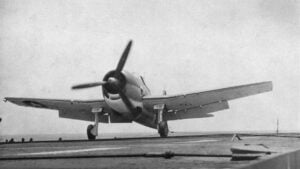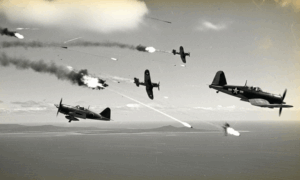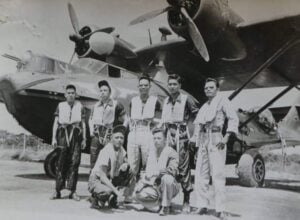The Incredible Story of the Ships That Survived Kamikaze Attacks

Photo by U.S. Navy, Public domain, via Wikimedia Commons.
The Sky That Wanted to Kill
In the spring of 1945, the sea around Okinawa looked calm at dawn, almost peaceful. But the men aboard the U.S. Navy ships knew better. They tightened ropes, checked lines, and waited for what they all felt coming. The radar screens began to fill—first with small dots, then too many to count. Above them, the sky was no longer just weather; it was the battlefield itself.
Okinawa was supposed to be another operation, one of many in the slow, grinding push across the Pacific. The plan was simple: surround the island, secure it, and move on. But then came the attacks that no one had truly prepared for—pilots who turned themselves into weapons. They dove straight at ships, each flight a final decision.
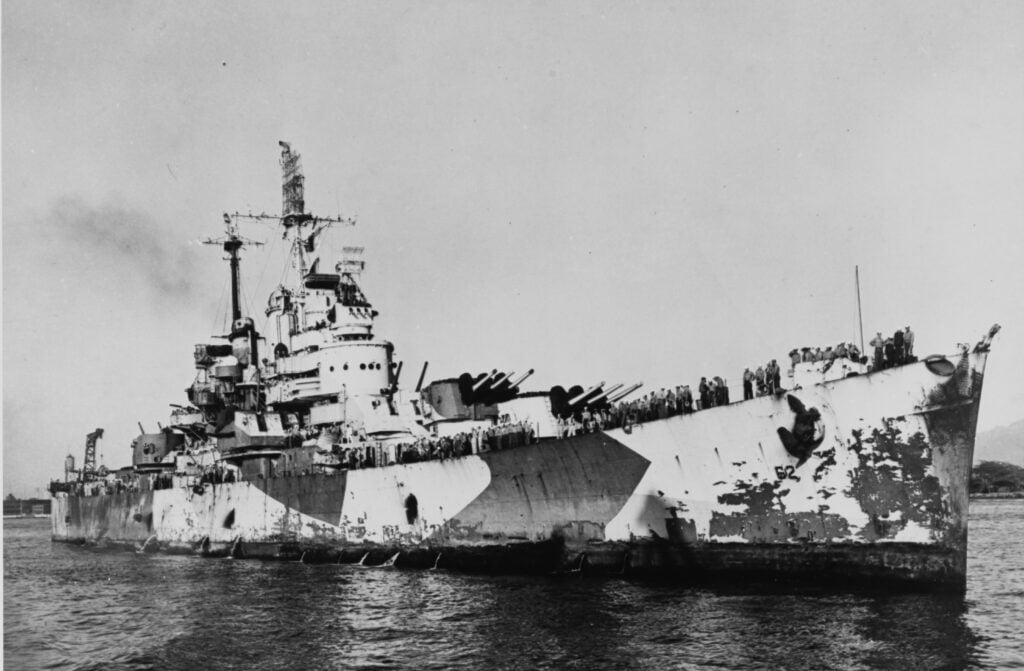
The First Wave
When the alarms went off, it wasn’t just sound—it was every man’s heartbeat jumping at once. Gunners moved automatically, spinning turrets and feeding ammunition. They shouted bearings, scanned the sky, and waited for the shape of death to appear. And then it did.
A single plane appeared low, tracing smoke across the sea. Gunfire met it, bright lines of defense stretching upward. Yet even when bullets struck, the plane kept coming. Only when a wing tore away did the laws of physics take over and the threat fall apart in midair. But many didn’t. Some hit their mark, and steel ships learned what it meant to bleed fire.
Fighting Fire and Fear
On the carriers, the flight decks became hospitals in seconds. Foam covered the surface, men dragged the wounded away from burning fuel, and hoses drew white arcs through black smoke. Nobody stopped to think; there was too much to do. Damage control crews crawled through heat and fumes, sealing holes, patching ruptures, and fighting the fires that threatened to consume the ship.
There wasn’t time for speeches or medals. Courage, here, was the cook who carried an injured sailor through smoke, or the young gunner who kept firing though his station burned. Every small act added up to survival. Ships stayed afloat through thousands of such moments—quick, silent decisions made between fear and duty.
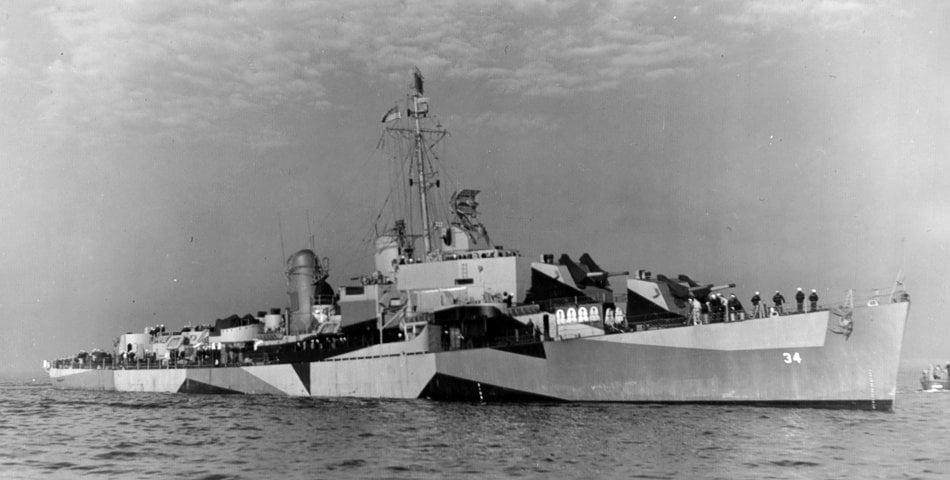
Endless Attacks
The kamikaze raids didn’t come once and end. They came again and again, at dawn, at dusk, sometimes all through the night. Destroyers turned toward incoming planes, using themselves as shields for larger ships. They were called “picket ships,” and many were lost.
The men learned to read the weather by the color of the smoke—black for oil, brown for wood, white for hope. Rain mixed with sparks on the deck, and night turned the ocean into a dark room where death could come from any direction. Each man found small rituals for luck: a folded cigarette pack, a tied knot, a hidden coin. It wasn’t superstition—it was survival for the mind.
The Ships That Wouldn’t Die
Some ships earned nicknames like “the one that wouldn’t die.” They took hit after hit, caught fire, and still stayed in formation. Crews patched holes with anything they had. When the fires were finally out, they cleaned the decks and said quietly, “Make her pretty again.” A ship that looked cared for, they believed, might keep fighting.
Reports came in filled with impossible words—“contained,” “cooling,” “operational.” Against all odds, many of those damaged ships stayed in the fight. The sky had fewer planes to give as the months dragged on. The pilots sent against the fleet grew younger, and their planes fewer. The storm that had begun with such fury began to weaken.

What Endurance Looked Like
When the raids finally eased, silence felt strange. Men coughed, laughed at nothing, and went back to work. The fleet had endured, though at a cost that can’t be measured in numbers. Some ships became floating patchworks of steel and scars, yet they stayed afloat and kept their promise—to hold the line until it was done.
Walk a deck at dusk, and the dents and burn marks told their own history. Each one was a memory: that hit from Tuesday, that explosion that missed by inches, that fire they somehow stopped. These were not wrecks—they were survivors.
The ships stayed, and the sky finally gave up. The sea, quiet again, carried the proof that endurance could outlast destruction. For the men who were there, that was enough.
















